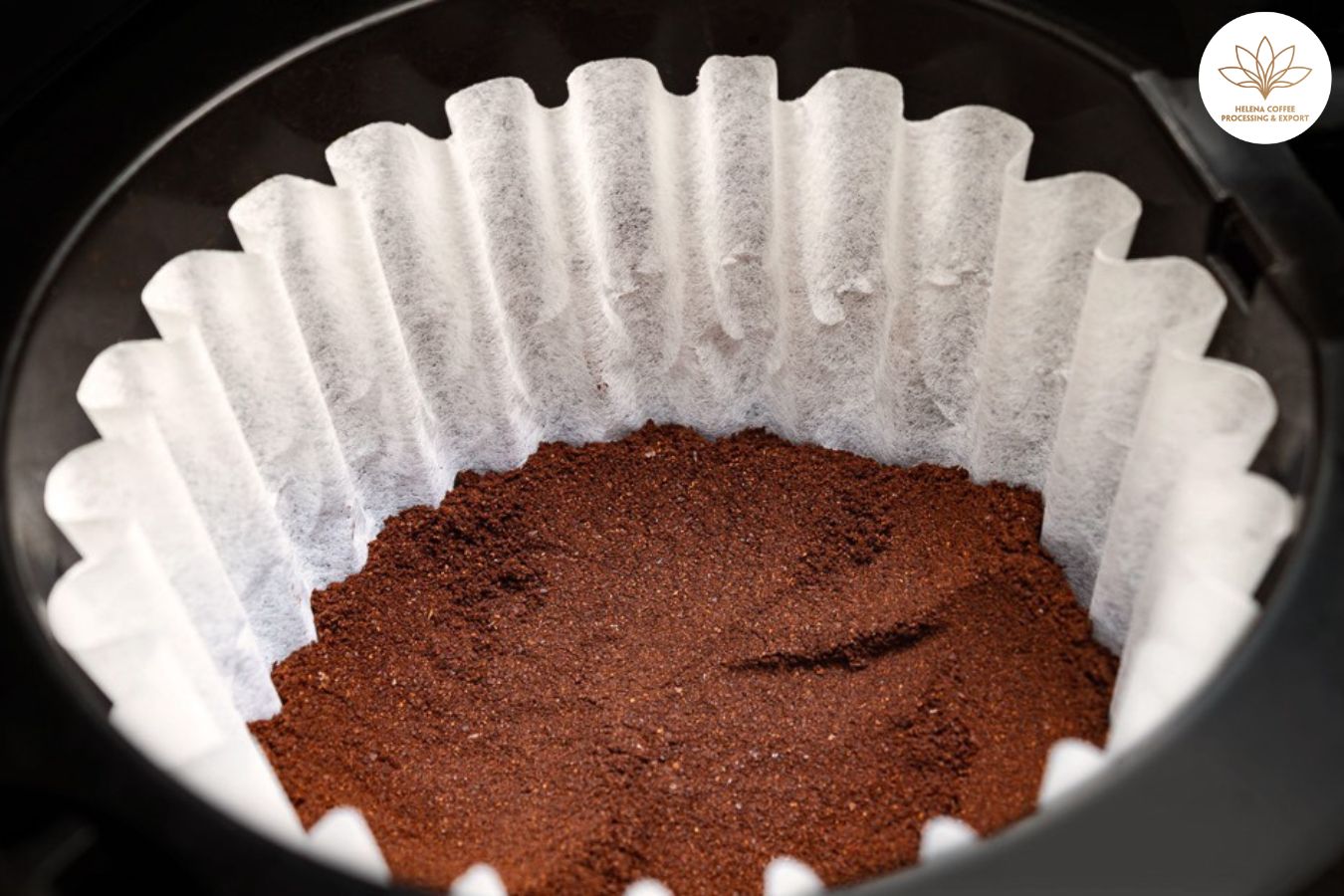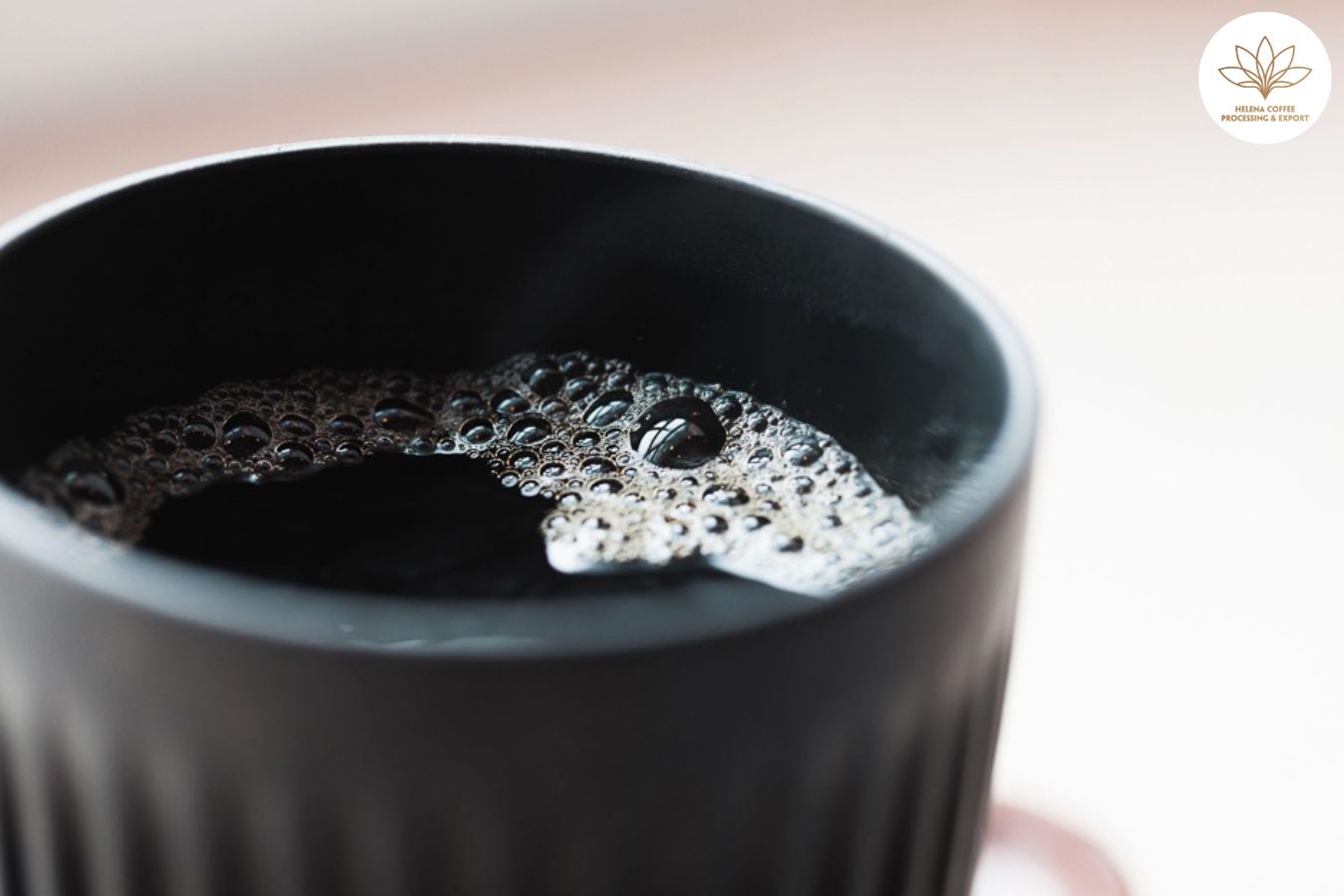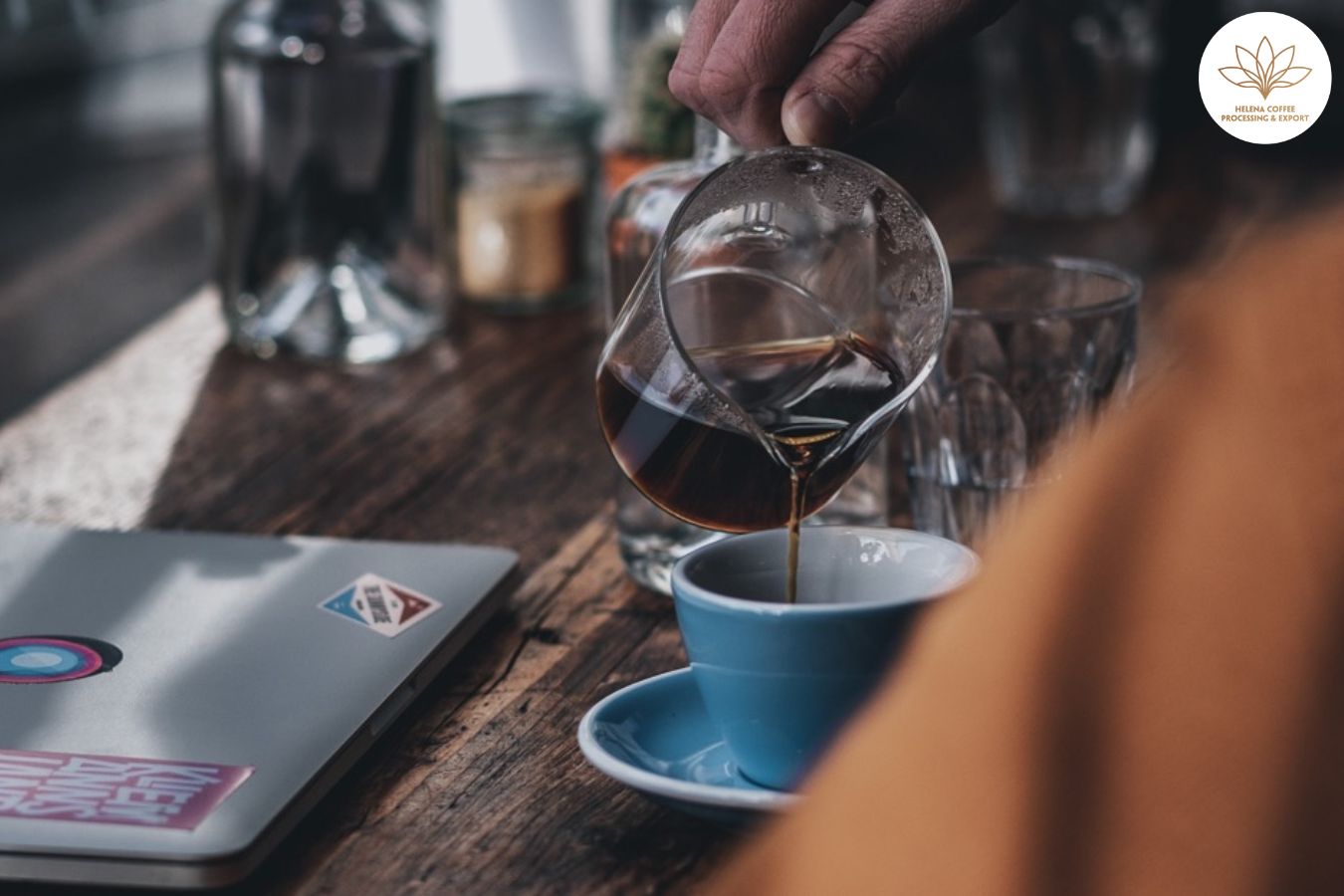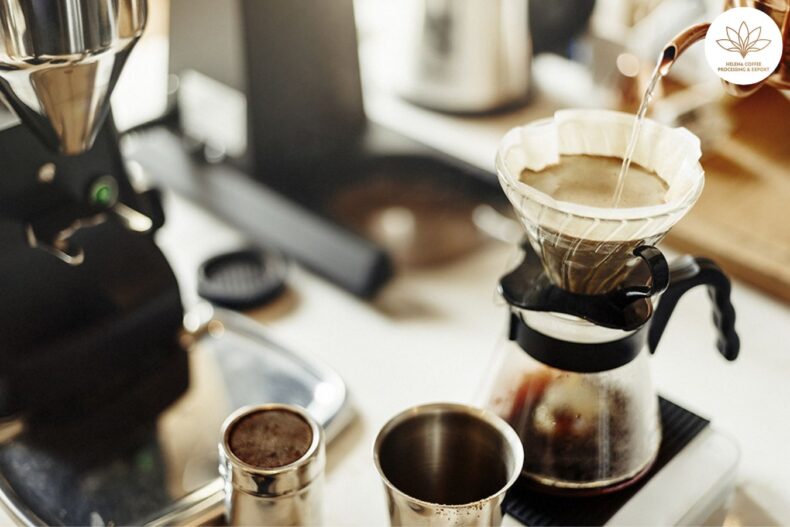
Batch brew vs pour over in coffee shops: The Art of the Pour-Over vs. the Convenience of Batch Brew
Pour-overs have captured the hearts of coffee aficionados and casual drinkers alike in coffee establishments worldwide. When executed with precision, this brewing method has the remarkable ability to unveil the most exquisite attributes of the coffee, much to the delight of both specialty coffee experts and enthusiasts.
Such is the reverence for the pour-over technique that some coffee shops specializing in high-quality brews have phased out batch brew, commonly known as drip coffee.
While pour-overs can indeed enhance the flavors and aromas of coffee more distinctly, relying solely on this method comes with its caveats, particularly in the absence of top-tier automated equipment. The most evident drawback is the time commitment – crafting a single pour-over can take upwards of five minutes, leading to a potentially longer wait for customers.
This raises a crucial question for both consumers and coffee shop operators: what is the acceptable wait time for a filter coffee? And, depending on the response, should coffee shops prioritize batch brews, pour-overs, or a combination of both to best cater to their clientele?
To shed light on these considerations, insights were gathered from Sophie Turner, Assistant Manager at Rosslyn Coffee in London, and Pedro Miguel Echavarría, General Manager at Pergamino Coffee in Colombia.
The Significance of Swift Service in the Specialty Coffee Scene
In the dynamic world of coffee consumption, convenience has long stood as a pivotal factor influencing the choices of coffee enthusiasts, and its importance has only been magnified in recent times. Deloitte’s post-pandemic study underscores this trend, revealing that a staggering 80% of consumers now place an even higher premium on convenience.
While the mention of convenience in the coffee realm often brings to mind ready-to-drink offerings and coffee capsules, its influence extends deeply into the domain of coffee shops.

Patrons of specialty coffee establishments come with the expectation of not just quality but also efficiency – a seamless service that delivers their preferred brew promptly. University College London’s findings put a figure to this anticipation: the average customer’s willingness to wait caps at just under six minutes before they contemplate abandoning the queue. Moreover, the research indicates that satisfaction levels can plummet from a high of 95% to 85% after a mere five-minute wait.
This data sets the stage for baristas to navigate the delicate interplay between the caliber of the drink and the swiftness of service. Failing to find this equilibrium can result in either a rapid turnaround of subpar drinks or an exasperating delay for a superior cup, each scenario striking a blow to the overall customer experience.
Adept baristas are well-versed in the choreography of an efficient workflow, yet they face inherent limitations on the volume of beverages they can craft simultaneously, especially with manual pour-overs. To ensure the delivery of consistently exceptional filter coffee without the wait, some specialty coffee shops introduce batch brew alternatives.
Batch brewing, also recognized as drip coffee in North America, is facilitated by automatic commercial machines that mirror the convenience of home brewing systems. The process is straightforward – the barista places a paper filter and ground coffee into the machine and activates the brewing cycle with a simple button press.
These commercial batch brewers are capable of producing several liters of coffee simultaneously, enabling baristas to expediently serve up quality filter coffee and effectively cater to the customer’s desire for both excellence and expediency.
The Efficiency Debate: Batch Brew vs. Pour Over in Specialty Coffee Shops
Pour overs have garnered a dedicated following, yet batch brew remains a cornerstone within the specialty coffee shop scene. Its ongoing presence is largely attributed to its role in streamlining service times—an advantage that cannot be overstated.
“Batch brew is a must-have for coffee shops,” asserts Sophie. “It’s among the simplest and most efficient beverages to craft. While offering a selection of exquisite pour overs is crucial, it doesn’t diminish the significance of batch brew,” she continues. “The ability to serve top-notch filter coffee promptly elevates the stature of specialty coffee establishments.”
During peak times, the capacity to craft pour overs with meticulous care may wane, compelling some coffee shops to suspend their pour over service in favor of swiftly delivering consistently high-caliber beverages. This prioritization renders batch brew an indispensable menu offering.
“During our busiest moments, batch brew becomes a crowd favorite at Rosslyn,” Sophie reveals. “Our Bunn machine is, in our view, an optimal solution for cafes that handle high volumes.”
Concurrently, the advent of automated pour over machines has revolutionized the barista’s role, enabling them to delegate the brewing process to technology and focus on other customer service aspects. However, these machines have their limits, often maxing out at 600ml per brewing cycle.
Flavor and Quality: The Batch Brew and Pour Over Comparison
Pour overs are lauded for their nuanced flavor extraction, but batch brew holds its own as an essential offering in coffee shops. “Side by side with a pour over, batch brew might appear less complex, yet it remains a beloved classic for many,” Sophie explains. “The diversity in filter coffee preparation is what distinguishes specialty coffee venues.”
Scaling up the brewing process, as with batch brew, presents its challenges. To achieve the desired output, baristas must fine-tune various parameters, including the coffee dose, brew ratio, grind size, extraction time, water temperature, and agitation level.

Customers opting for a swift batch brew might not anticipate an experience on par with a pour over, but Pedro sees this as an opportunity for specialty coffee shops to defy expectations with exceptional batch brews.
“Specialty coffee venues should definitely include batch brew,” he advocates. “It’s entirely feasible to produce batch brew that meets high standards, leaving no compromise on quality or taste profile. Achieving this requires dedicated time to develop and perfect your recipes.”
Echoing this sentiment, Sophie emphasizes the importance of batch brew alongside other filter methods, noting the necessity of investment in time and effort to ensure its excellence.
“As a consequence of such dedication, I’ve become an avid fan of batch brew,” she concludes. “It’s my go-to order whenever I visit a coffee shop.”
Enhancing Customer Experience: Barista Strategies for Communicating Wait Times
Sophie and Pedro concur that for the dual benefits of service speed and coffee quality, batch brew deserves its place on the menu of coffee shops. Nonetheless, when customers opt for a pour over, baristas face the task of managing expectations regarding the longer preparation time.
Customers drawn to pour overs are typically cognizant of the extended brewing process and are often prepared to wait. Nevertheless, baristas bear the responsibility of clearly articulating the expected wait time—usually around five minutes or more—and elucidating the reasons behind it to prevent any potential dissatisfaction. A barista might, for instance, inform patrons that their coffee will be freshly ground, necessitating the purging of grinders to ensure no flavor cross-contamination from different coffee beans.
Upon understanding the wait involved with pour overs, some customers may choose the quicker batch brew option. In such situations, it’s imperative for baristas to ensure that the batch brew they serve is of the highest quality.
Sophie stresses the importance of consistency across all brewing methods: “Every morning, our initial task is to fine-tune the batch brew, ensuring its flavor is on point. Like any brewing technique, the batch brew recipe may need adjustments.”
The capability to serve outstanding filter coffee consistently hinges on investing in quality batch brew equipment. Today’s market offers an array of machines that handle various volumes and grant baristas greater control over the extraction process.
Improvement Insights for Batch Brew
Sophie shares, “Perfecting batch brew is an exercise in trial and error given the high volume involved, and even minor tweaks can significantly alter the coffee’s flavor profile. My training taught me to adjust one variable at a time. For instance, I assess whether the coffee’s body is too thin or could be more full-bodied, and I adjust the dose or yield accordingly. Next, I consider the intensity—whether the flavors are too strong or too subtle—and modify the grind size accordingly, followed by fine-tuning the balance between bitterness and sweetness. Every coffee requires a unique approach, but this systematic process is my cornerstone for dialing in filter coffee.”
Pedro echoes this approach, emphasizing the necessity for baristas to experiment with various coffees to perfect their batch brew recipes and achieve delectable results.
In recent times, the ascendancy of pour overs within the coffee culture has been unmistakable, capturing the attention of enthusiasts largely due to the intricate brewing process that accentuates the nuanced flavors of specialty coffee.
Yet, in the realm of specialty coffee shops where both the time customers spend waiting and the caliber of their beverage are pivotal to their satisfaction, batch brew maintains a crucial role. This method not only facilitates a more expedited service but also, when executed with diligence and precision by skilled baristas, can deliver a coffee experience that rivals the meticulous pour over. As such, batch brew commands a significant position on the menu and warrants the same meticulous attention to detail from baristas dedicated to their craft.
FAQS:
